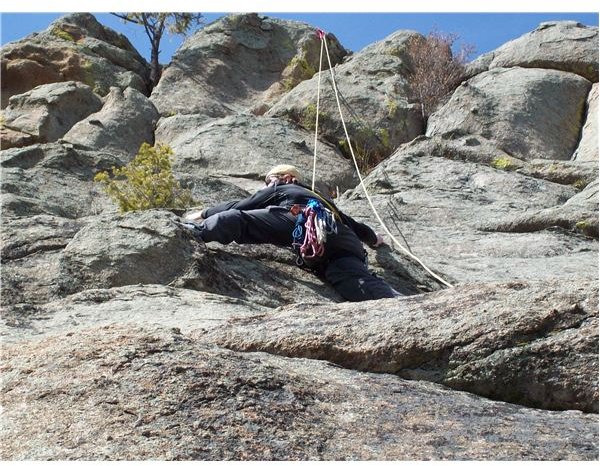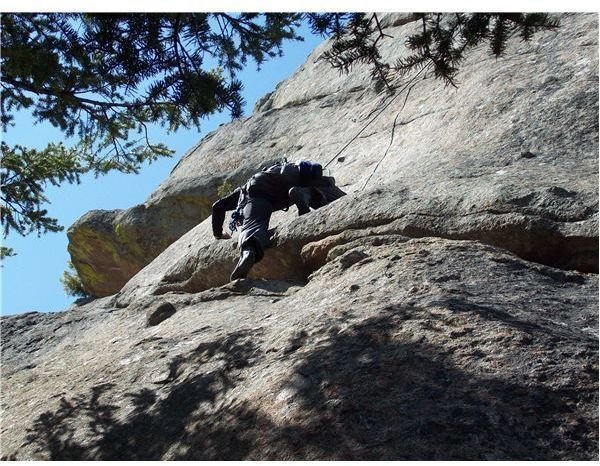Rock Climbing for Beginners
Obviously, rock climbing can be a dangerous outdoor sport. Rocks are hard objects to begin with and when you throw in the factors of gravity, instability, and falling particulate matter in your eyes, bad things can happen. Safety is always a priority and protecting your head with a helmet is a must.
The thing you should never lose focus of is that you’re doing this to have fun. Try it out and see if it’s for you. Focus on the route through the rock and not on your skills in relation to any other climber. That’s always easier said than done but it’s very important to be aware of your own skill limitations and not take unnecessary risks. If you’re thinking rock climbing itself is an unnecessary risk then it’s probably not an activity for you as this activity tends to draw the thrill seeking adrenaline junkies anyway. But that’s not always the case at all and unless you try it, you’ll never know.
It’s highly advisable to find a class at a local gym or go to a clinic offered by organizations throughout the country to go over the basics of gear, knot tying and safety precautions. Nowhere is it more applicable to get someone with know-how and experience to ‘show you the ropes.’ Enthusiasts in the rock climbing community tend to be amazingly receptive to showing new people the A-B-Cs of rock climbing. Seek out someone like that and remember the bottom line rule here to never do anything above your comfort level when you’re starting out.
What to Expect
You’re going to have a rope attached to a harness you wear around your waist and the climbing partner is responsible for holding on to that rope and feeding it whether you’re moving up or down. The rope is anchored at the top objective for a beginning climber. With that security you use your hands and feet to traverse the rock face, carefully studying your options of where to place your hands and feet.
Something that should be drilled into a climber’s head is that they’ll want to focus far more on using their legs to move up a rock face than their arms. Your legs are far stronger and don’t tire as quickly as your arms and upper body. Your hands and arms should be used to hold you close to the rock but your legs are your strong and solid anchors. Your fingers need to operate like clamps on the small rock holds and cracks.
I’m at the beginner rock climbing stage myself and I don’t claim to be an extraordinaire but I have caught the climbing bug. It is like a puzzle and you have to focus all of your attention to be fully present in the moment in order to make it out of that moment safely. So it has Zen-like transfixion to it and allows you to get into the zone. Plus it’s physically and mentally challenging and any time you get the chance to test your metal the rewards can be extremely gratifying. I’ve found a good partner to learn from whom I’m very comfortable with and have been invited out with others too.
You’ll learn something new every time you climb and although this basic overview should help you in what to expect, the only real way to learn to climb is to climb. In a future article regarding rock climbing, you’ll be given some terms and the vital rock climbing gear you’ll need to familiarize yourself with before you get out there.

Thinking About Indoor Climbing?
If you’re also considering indoor rock climbing, check out this beginner’s guide: Getting Started With Indoor Rock Climbing.
